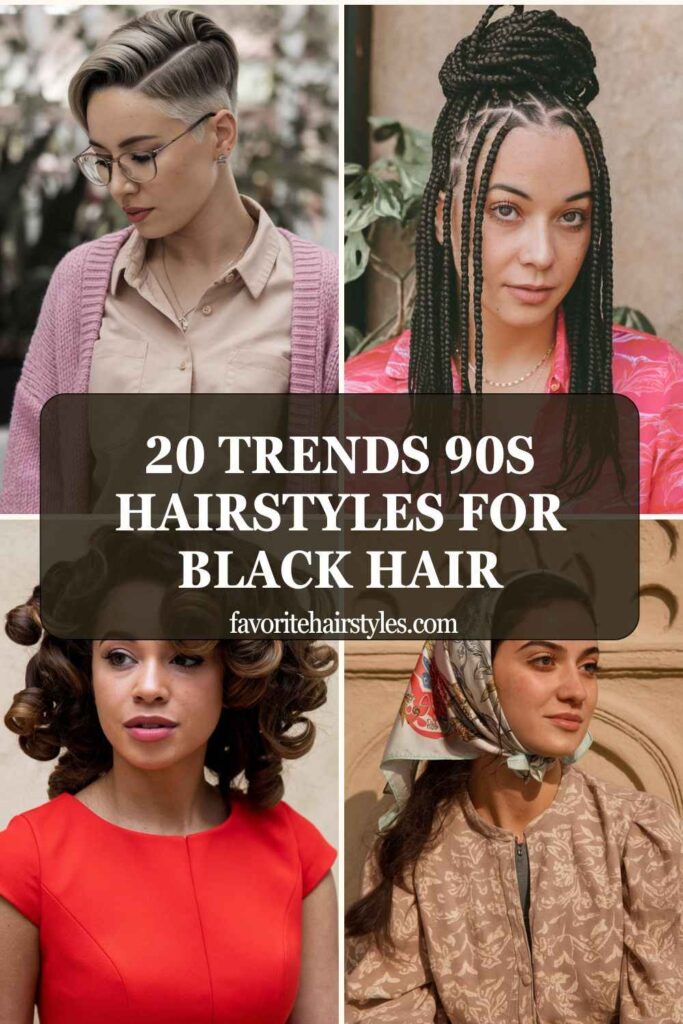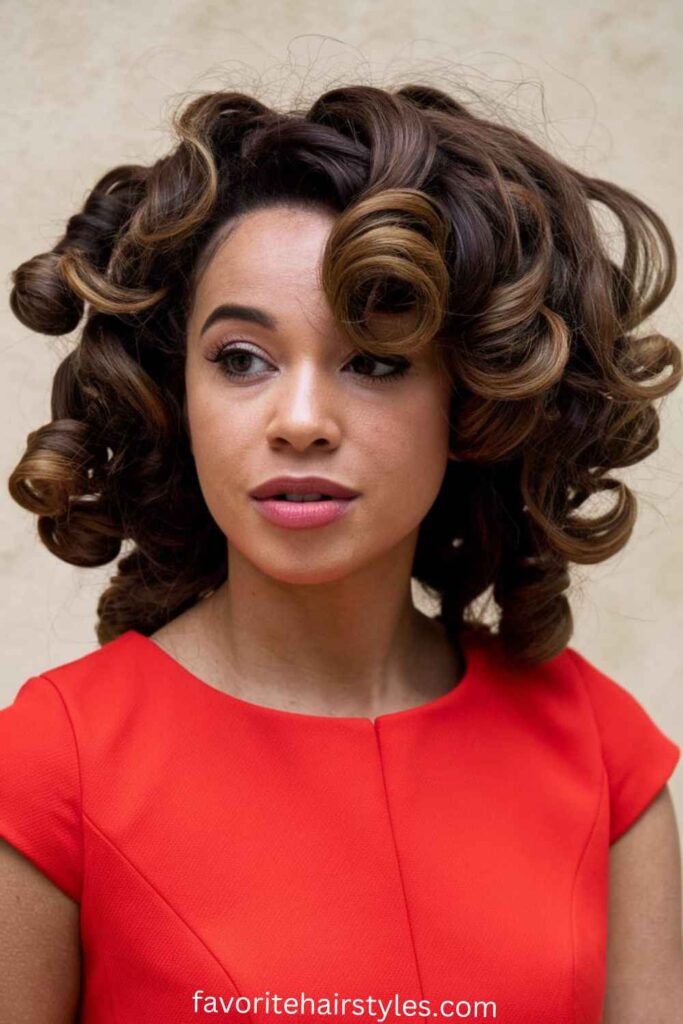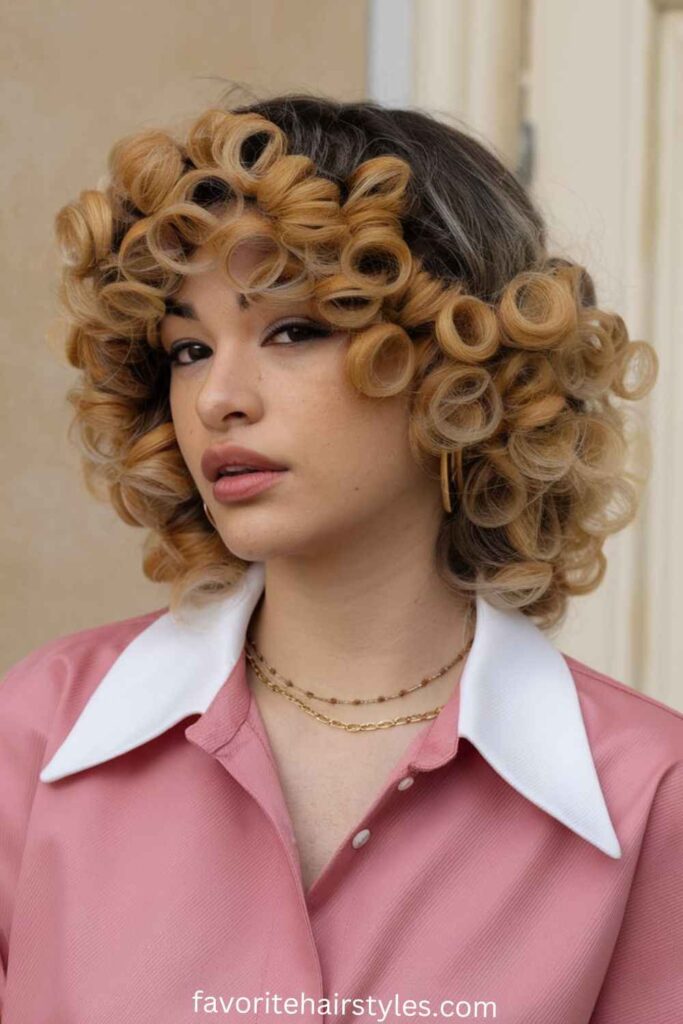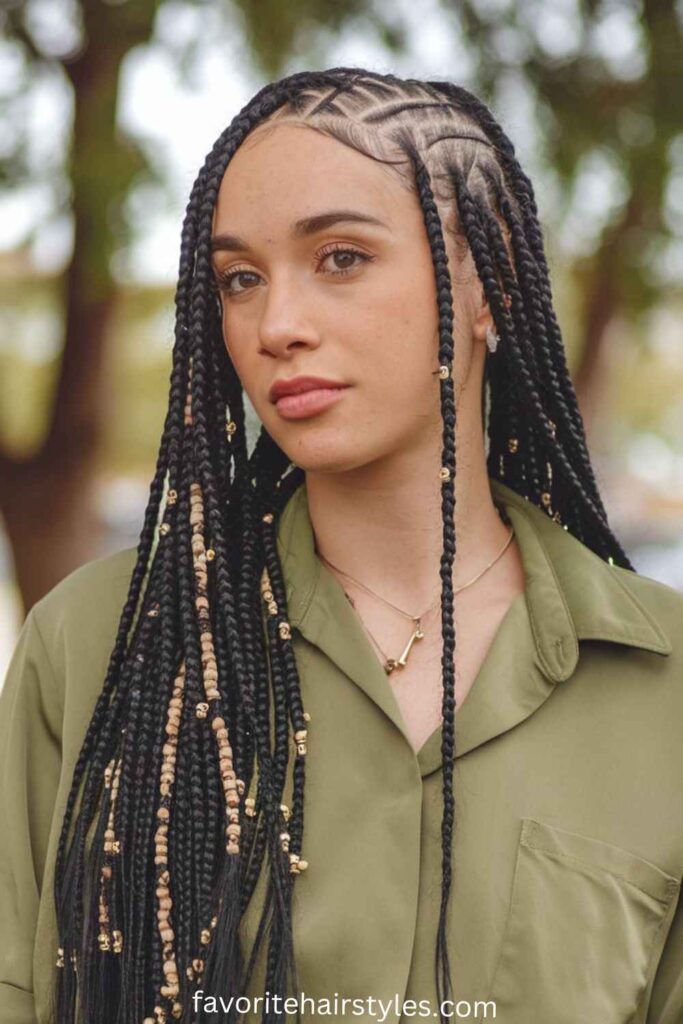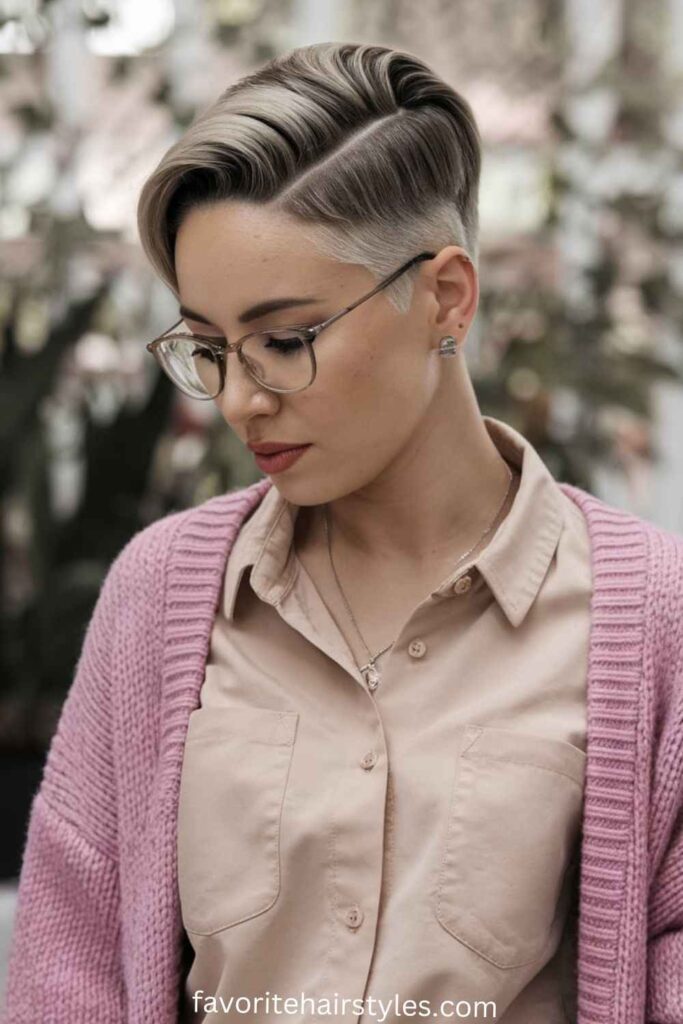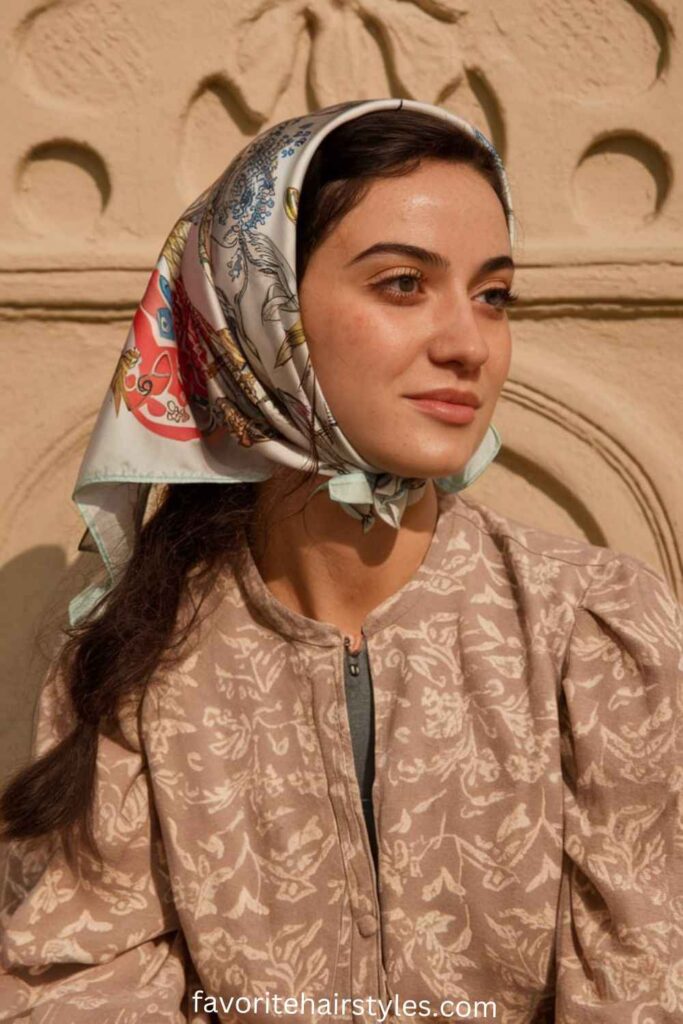Funky Hair Styles of the 90s 90s Hairstyles Black Hair: 90s hairstyles were the result of a massive transformation that happened to Black culture, music, fashion, and, most importantly, hairstyles in the 1990s. With hip-hop, R&B, and pop music taking over, Black celebrity musicians and actors emerged as strong style icons. The period was marked by a surge of revolutionary, experimental, and expressive styles of hair that demonstrated the way Black hair could be in its natural form. From the emergence of the natural hair movement to the widespread popularity of braids and curls, the 90s were a time of empowerment and cultural pride amongst the Black communities.
In the 90s, the trends of Black hair had a strong relation to the massive socio-political movements of that period. The cultural value of hair was not only about beauty, but it was also a strong symbol of self-identity, heritage, and self-love. Black hair became not only about following the trends but also about incorporating authenticity and individuality, with such stars as Janet Jackson, Brandy, Will Smith, and Lauryn Hill in the lead. Several hairstyles, such as the daring bob, elaborate braids, natural curls, and the famous afro, are not only principally concerned with beauty but also with the rediscovery of the cultural heritage and the beauty of the naturalness of Black hair.
90s Hairstyles For Black Hair
Bold Bob Cut
The bold bob cut is one iconic look of the ’90s, especially with Black women. Its sharp and smooth lines and perfectly shaped form became equated with contemporary elegance. It was a hairstyle that was frequently combined with a deep side part so as to provide additional volume and definition. Such celebrities as Halle Berry and Brandy contributed to this appearance being a blatant symbol of sophistication and stylish self-confidence in the 90s.
Fluffy Curls and Volume
The natural curls were adopted in the 90s as never before. Black women demonstrated big and puffy curls, boasting of their natural hair. Several products, such as mousse and curl activators, were used to increase the bounce and the volume of the curls, giving them a thicker, more prominent look. This is a free and daring style that was observed in the likes of Toni Braxton and Lauryn Hill as an embodiment of beauty and uniqueness.
The Jheri Curl Revival
Although the Jheri curl was first worn in the 80s, it was revived in the early 90s. This was a glossy, shiny, and loose curly hairstyle that had to be very well maintained and had become an urban cool hairstyle. Ice Cube and Lionel Richie are among the celebrities who sported the Jheri curl, and it was something many of them wore in the ’90s. The defined, shiny curls were a depiction of a time when the emphasis of hair styling was on texture and volume in Black hairstyles.
Braids and Cornrows
A standard in the Black hair culture of the 90s, braids and cornrows became an element of the style because they are a versatile means of wearing natural hair and making it look stylish at the same time. These hairstyles ranged from elaborate cornrow patterns to bare and simple box braids, usually with the addition of beads or cuffs to give them the extra flair. The appearance became familiar with the Black beauty and cultural pride, as such celebrities as Janet Jackson in Poetic Justice popularized the look.
Flat Top with High Fade
The high fade and flat top became a favorite among Black men in the 90s with its sharp edges and structured outline. This hairstylist frequently uses shaving the sides but leaves the top full and square, creating a high-contrast appearance. Artists such as Will Smith in The Fresh Prince of Bel-Air popularized it, so it has become a trending style in both street culture and mainstream media.
Doo Rags and Head Scarves
Head scarves and do-rags could not simply be considered just a practical item in the 90s; they became a part of Black hair culture. Worn either to hold the hair tightly up at night or to give a sleek appearance during the day, these items were part and parcel of the way the Black hair was styled in one way or another. Entertainment stars such as Aaliyah and rappers such as Tupac almost always wore do-rags, and this gave a certain taste of style and swagger to the fashion of the day.
The High Puff
The high puff was a fun and natural style that enabled Black women to wear their curls in an easy-breezy, voluminous manner. This was also often worn with a headband or hair tie, and the hair was gathered together into a high ponytail that was then allowed to puff out naturally. It was functional and fashionable and established an appearance of fun and youthfulness that was very popular in the 90s, especially among celebrities such as Brandy.
Micro braids
Microbraids were an enormous trend in the 90s, and their miniature and petite braids lasted weeks. These braids were seen as a combination of functionality and durable style so that wearers could have an invigorating style and still appear fashionable. Microbraids were introduced into mainstream life by celebrities such as Bo Derek, so they became a symbol of Black hair in the 90s.
Bantu Knots
The Bantu knots, one of the traditional hairstyles in Africa, revived in the 90s. These knots were frequently arranged in symmetrical patterns on the head, in tight, small segments that they were worn in, giving a striking and bold appearance. Celebrities such as Solange Knowles, Toni Braxton, and others who adopted the style also wore the knots on both informal and formal occasions, which demonstrated their ability to fit in various places.
Finger Waves
Conclusion
Black hair was a decade of the 90s, and the style and culture underwent a major change. Hairstyles of that time still carry an impact on contemporary trends, and most of the iconic styles (including dramatic bobs, big curls, braids, and natural waves) are a powerful reappearance in the current times. The trend of celebrities and influencers wearing 90s-inspired styles also tends to rely on the boldness and uniqueness that the decade was known for. Having influenced the rediscovery of box braids and the return of the afro, 90s hairstyles have established themselves as a source of power and beauty to the present beauty industry, where the idea that natural, textured hair is, in fact, powerful and beautiful exists.
The 90s transformed the beauty ideals of Black hair by dismantling the traditional ideas and promoting self-expression and cultural pride. The time was used to re-establish the image of Black beauty, now beyond the Eurocentric standards that prevailed in previous decades, and with an appreciation of the diversity and versatility of Black hair in all its manifestations. This change not only affected the way the Blacks themselves appreciated their own hair but also influenced the way the rest of the society embraced the beauty of different hair textures. The effects of Black hairstyles in the 90s are still felt as more individuals are embracing their natural textures and are also experimenting with hairstyles that are culturally relevant.
FAQ
1. What do you consider to be the trendiest Black hairstyles of the 90s?
A. Bold bobs, Jheri curls, box braids, high fades, and big natural curls were some of the most popular hairstyles in the 90s for Black hair. These styles were praised for their creativity and versatility and captured the cultural importance of Black hair during that period.
2. What were the effects of hairstyles that were used to make up Black skin in the 90s on beauty standards?
A. The 90s were the decade that helped change the beauty standards of Black hair to the acceptance of natural textures and the appreciation of individuality. It was no longer perceived as a thing to be changed to a mainstream image, but the Black hair was to be appreciated and styled in a variety of unique and beautiful styles.
3. What was the culture behind the 90s Black hairstyles?
A. The hairstyles of the 90s Blacks were closely related to cultural pride, self-expression, and empowerment. A lot of styles were an exploration of the natural beauty, and they glorified Black heritage and uniqueness, with such icons as Janet Jackson, Will Smith, and Lauryn Hill becoming the first to redefine Black hair.
4. Do 90s hairstyles on Black hair still exist in this day?
A. Yes, numerous hairstyles of the 90s Black hair remain most applicable now. Such styles as box braids, high puffs, and natural curls have returned significantly, and celebrities and influencers still appreciate them based on the trends of the 90s, so they are eternal and can be adapted to new tastes.
5. What are the ways to recreate a 90s hairstyle on Black hair?
A. The re-creation of a ’90s hairstyle on Black hair is dependent on what you are trying to achieve. In order to create bold bobs or a huge number of curls, apply styling tools and products such as mousse, curl cream, or a curling iron. In the case of braids or cornrows, you can either visit a stylist or you can learn how to braid them yourself. To have a 90s hairstyle, it is important to be creative, individual, and natural in texture.

